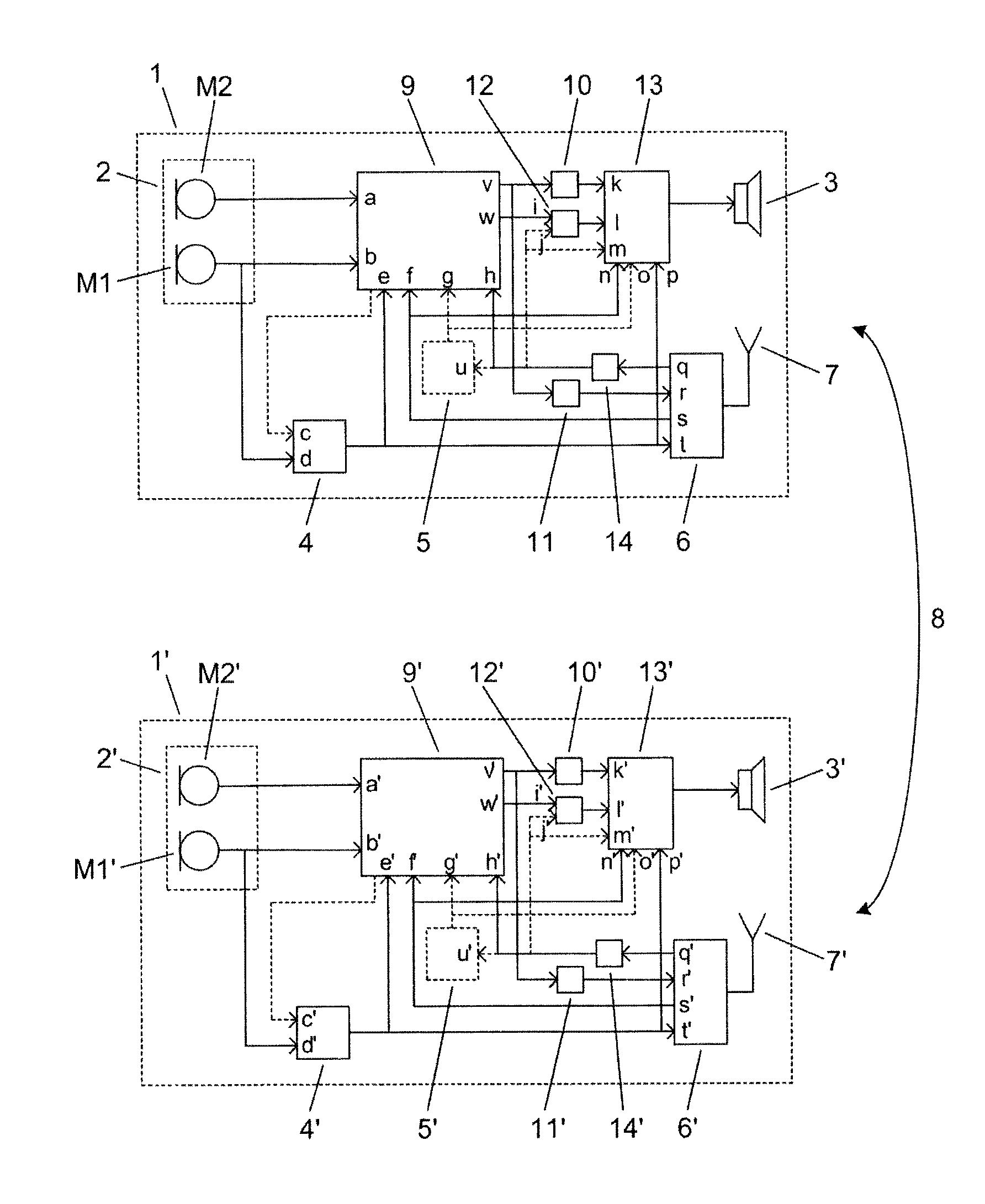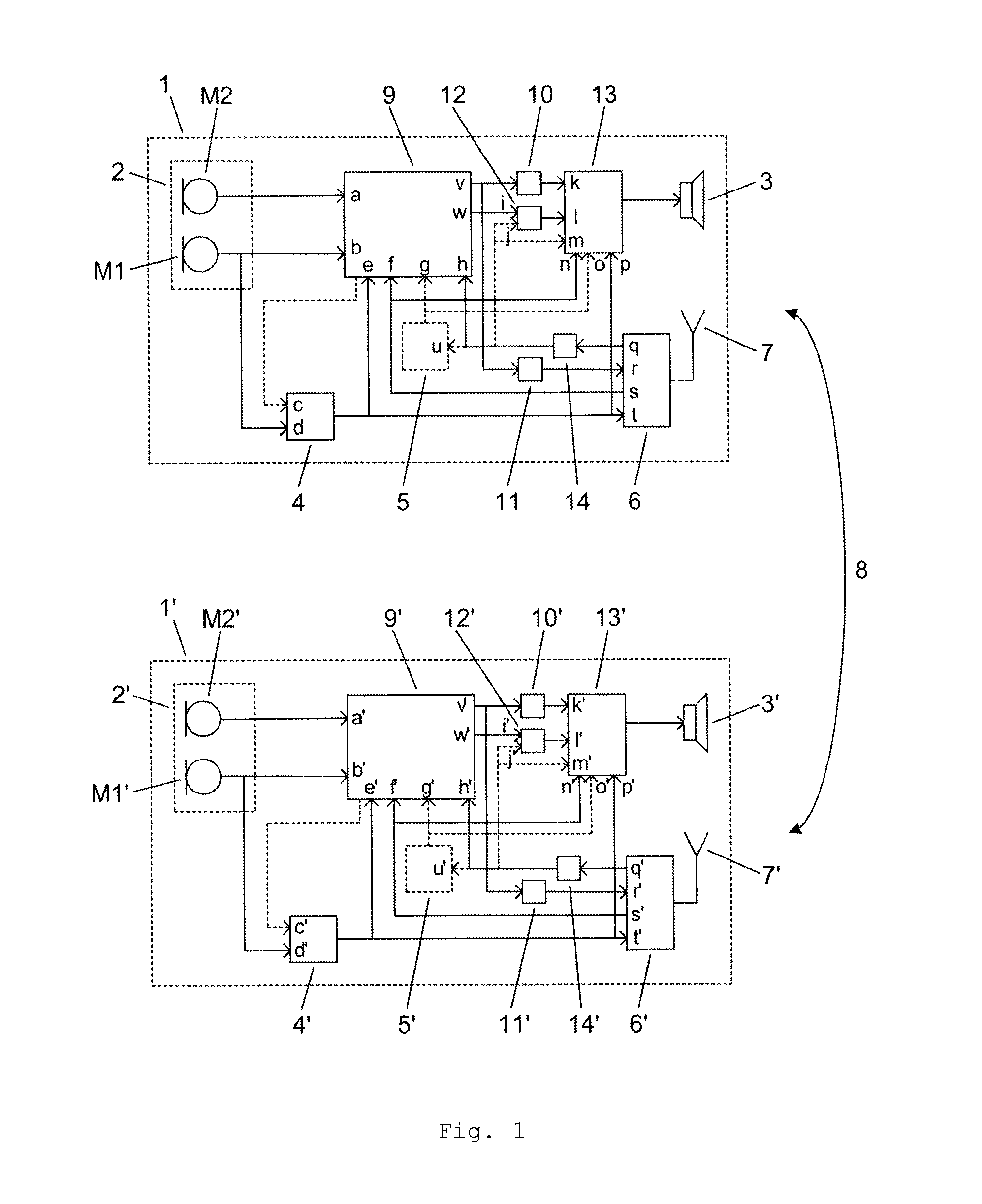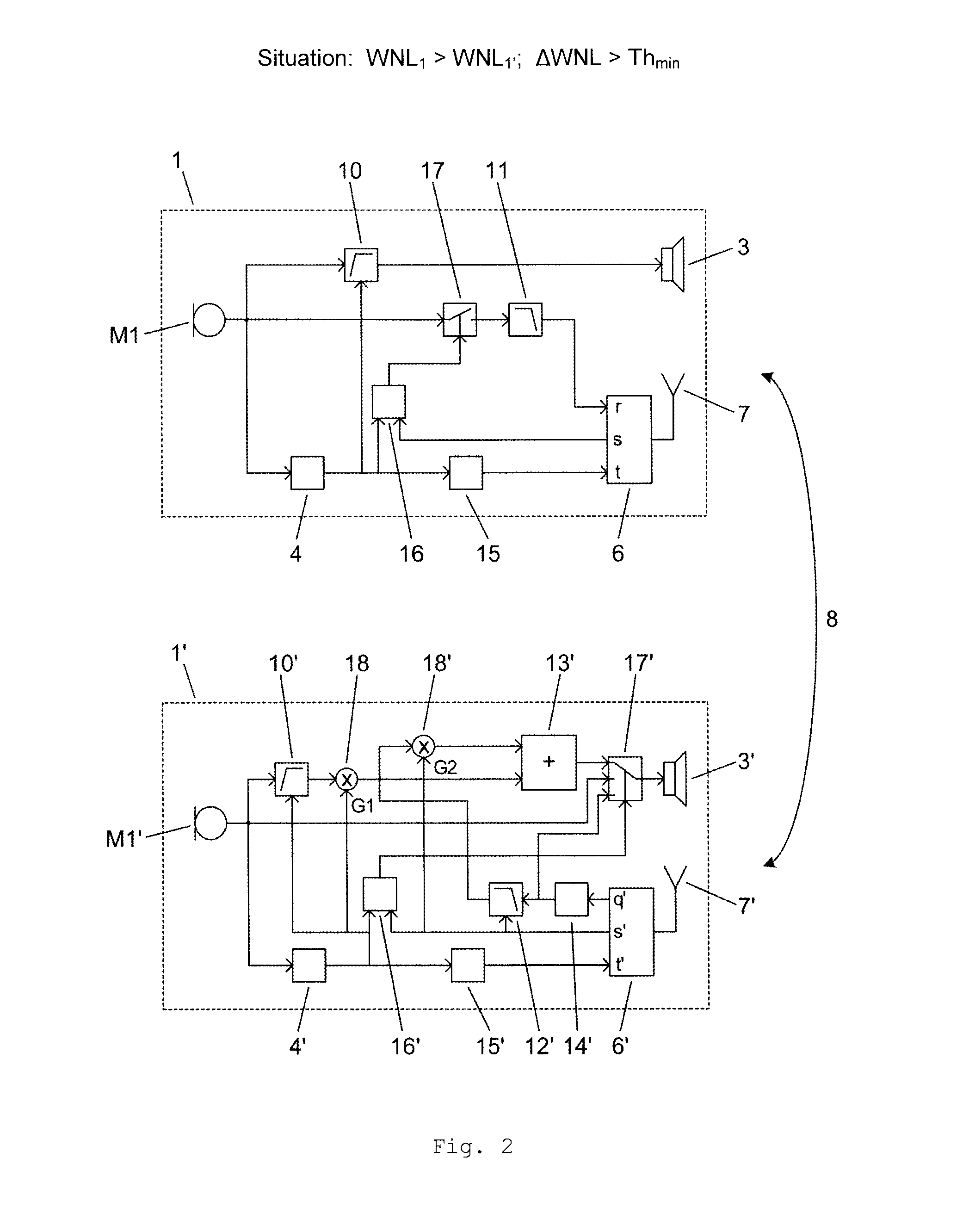Method for operating a binaural hearing system and binaural hearing system
a binaural hearing and hearing system technology, applied in the field of hearing devices, can solve the problems of annoying loudness, high sound pressure level, and current monaural techniques for dealing with this problem are only successful to a limited degree, and achieve the effect of improving hearing perception
- Summary
- Abstract
- Description
- Claims
- Application Information
AI Technical Summary
Benefits of technology
Problems solved by technology
Method used
Image
Examples
Embodiment Construction
[0062]A basic embodiment of the present invention will now be described with the aid of the schematic illustration presented in FIG. 1. FIG. 1 depicts a high-level block diagram of a binaural hearing system consisting of a first hearing device 1 and a second hearing device 1′ which are interconnected by means of a bidirectional link 8 (also referred to as binaural link). This link commonly is realised as a wireless link, for instance an inductive link or a radio frequency link, but may also be implemented as a wire-bound link or by employing the skin as a conductor. In FIG. 1 the first and second hearing devices 1, 1′ communicate wirelessly using the transceivers 6, 6′ together with the associated antennas 7, 7′. Audio signals (digital or analogue) as well as control data can be exchanged utilising different bandwidths between the two hearing devices 1, 1′ via this link 8. Ambient sound is picked-up separately by each of the first and second hearing devices 1 and 1′ with the corresp...
PUM
 Login to View More
Login to View More Abstract
Description
Claims
Application Information
 Login to View More
Login to View More - R&D
- Intellectual Property
- Life Sciences
- Materials
- Tech Scout
- Unparalleled Data Quality
- Higher Quality Content
- 60% Fewer Hallucinations
Browse by: Latest US Patents, China's latest patents, Technical Efficacy Thesaurus, Application Domain, Technology Topic, Popular Technical Reports.
© 2025 PatSnap. All rights reserved.Legal|Privacy policy|Modern Slavery Act Transparency Statement|Sitemap|About US| Contact US: help@patsnap.com



